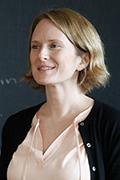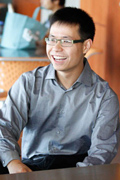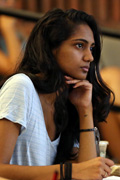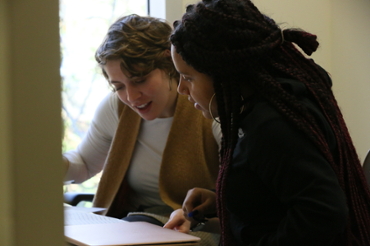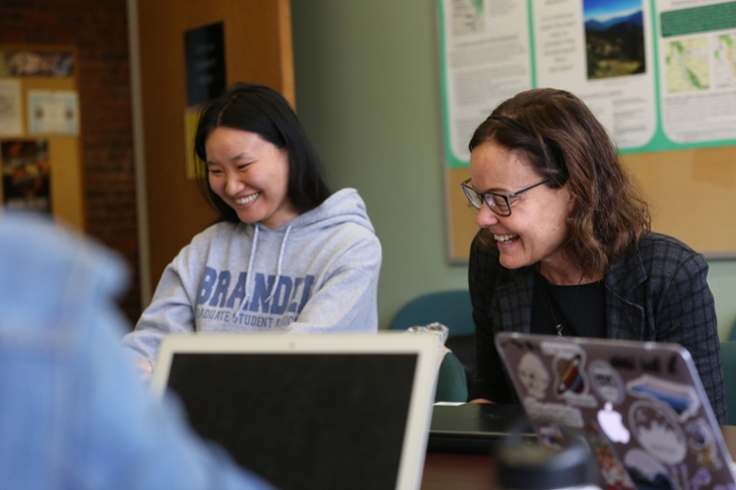Ryan Collins, MA '13 and PhD '18, Brings Archaeology Skills to Range of Roles
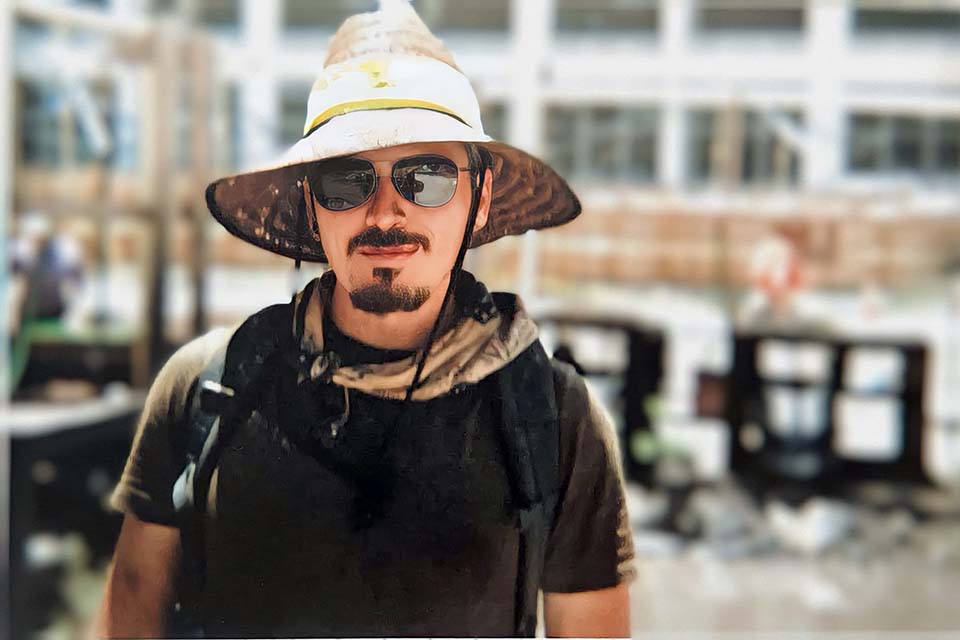
April 22, 2025
Abigail Arnold | Graduate School of Arts and Sciences
Since graduating from Brandeis University’s Graduate School of Arts and Sciences (GSAS), Ryan Collins, MA ‘13 and PhD ‘18 in Anthropology, has worn many hats. He’s harnessed his skills as an archaeologist and his experience in digital media both in the private sector and, most recently, as a new Assistant Professor at Millsaps College. Collins joined GSAS to discuss his range of roles, the projects he’s worked on, and the importance of collaboration across fields.
This interview has been edited for clarity.
You’ve worked both in and out of academia since getting your PhD. Can you tell us more about the projects you’ve worked on?
My path was a little unorthodox, starting from my time at Brandeis. As a student, I started a podcast called This Anthro Life with two fellow students, Adam Gamwell and Aneil Tripathy, which got me involved in digital media and doing work that was both academic and public facing. After graduating, I started a postdoc at Dartmouth, but COVID hit and I couldn’t do fieldwork. Eventually, I found a cool outlet to blend my passions for archaeology and digital media by working for the company SEARCH Inc. In this role, I directed projects on the ground – the largest was in Miami, where I spent two years – but also developed public facing digital media within the company related to archaeological projects.
We traditionally do archaeology in the academic setting by going out for a few months each summer and doing slow, methodical, targeted investigations. But when you’re doing contracted archaeology with a private company, you have to do things a little differently due to state and federal regulations, funding levels, and client needs. For example, in Miami, the project related to a client who was developing a high-rise on a plot of land that was also the site of an ancient Tequesta village. We were navigating the ruins of ancient buildings, human remains, and artifacts on this site. Representing my firm, my co-leads and I coordinated with four to five firms, helping direct 100 archeologists on the ground daily! Through my projects at SEARCH, I would also meet with local and state government officials, state historic preservation officers, and tribal representatives – these experiences taught me how important it is to encourage a lot of open dialogue to manage professional archeological projects. I was fortunate to lead and co-direct several projects in the US and abroad that helped me see how archeology could be practiced outside of purely academic settings.
I was incredibly fortunate to serve as a co-lead and linguist on a large project at SEARCH, subcontracted by the Defense POW/MIA Accounting Agency in Italy last year. My team and I worked on a small island, looking for the remains of US servicemen from a downed World War II aircraft. Our eighty-years-later rescue mission was very successful in our efforts. It was one of the most incredible, life-changing, and methodologically distinct projects I’ve been fortunate enough to contribute to, especially since my academic background and research is based in Mexico, and this was a very different part of the world.
After working on these projects in a non-academic setting, what brought you back to being a professor?
I never wanted to leave behind being a professor and was teaching remotely at Lesley University while working full-time for SEARCH. When deciding to go back to academia full-time, I recognized that by being in a private firm and leading large projects, I was becoming a better archaeologist and had new skills that would be great to bring into the classroom. Working in the private sector is a huge part of archeology, but I had no idea how it worked when I started, so I wanted to guide my students in exploring similar paths. Returning to academia was also a good opportunity to continue doing research, as you don’t have the same freedom to publish research when working in the private sector. Your work can still be published, but you don’t begin projects in the field with the same kind of research questions.
What did you take from your Brandeis training into these different roles?
Compared to some other programs, Brandeis doesn’t have a large number of archeologists. At first, that seemed scary to me as a young graduate student, but it turned out to be a good opportunity to collaborate with other anthropologists and with classicists to develop my skills in a unique way. Brandeis is very open to the interdisciplinary, which made me more comfortable talking to people outside my field and finding cool ways to collaborate. That’s been integral to every part of my work moving forward. Comfort in talking to people who don’t have the same background has been especially important in the private sector. Having conversations with clients, government officials, tribal representatives, and others was critical, and the ability to bring these groups together was essential.
Tell us more about your podcasting work. Did you have experience in digital media when you came to Brandeis? How do you use your podcast to bring in a range of audiences?
I had no experience in digital media when I came to Brandeis, and I think my friends would have called me more of a Luddite at the time! Adam Gamwell, Aneil Tripathy, and I taught ourselves about podcasting; we started by recording a weekly show with the Brandeis radio station. Later, we created partnerships with the American Anthropology Association and the Smithsonian Center for Folk Life and Cultural Heritage, which allowed us to do interviews and hear from people about their cultures.
Our podcast always aimed to be approachable for folks who weren’t aware of anthropology. Most people don’t go to school to be anthropologists, so we wanted to make it approachable in a way that shows why the discipline is important and that it doesn’t have to be a silo. We looked at a wide range of topics, including how music traditions help maintain a connection to the past in Armenia, the work of the leaders of the March for Science, and various individual projects, including local photographers, global ethnographers, and historical researchers. We were so incredibly fortunate to meet so many people who gave us a deeper insight into both past and present.
Now I am teaching a course on digital media in anthropology here at Millsaps!
What advice would you give current graduate students about career exploration, both during graduate school and afterwards?
Creativity and curiosity should always be encouraged. You may not know the direction you want to go, but be open-minded to the opportunities that arise, persevere, and be persistent. It’s especially important to put people from different backgrounds in dialogue – that will create windows of opportunity. Definitely don’t give up!
There’s a lot of trial and error. Sometimes, at the end of grad school, we think we understand the direction our careers will or should take. That’s not necessarily true. It takes a while to figure out what works for you and what doesn’t, so be open-minded: if you take an unexpected route, it will probably give you ways to grow and to refine the direction you want to take.
